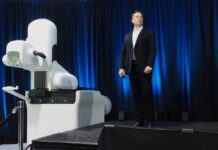In late July this year, two preprints appeared on arXiv (a free open-access e-print archive) claiming a monumental discovery – superconductivity at room temperature and ambient pressure in a material known as LK-99. The lead authors of the preprints are Sukbae Lee and Ji-Hoon Kim from the Quantum Energy Research Centre in Seoul.
Labs across the world rushed to carry out replication experiments and theoretical simulations and soon it became apparent that the reality of LK-99’s properties was far from simple.
The promise of new superconductors is extremely exciting to the scientific community. Since electricity can pass through them without using energy, superconductors could be utilised to improve our power grid’s efficiency and potentially unlock new techniques for storing energy.
Unfortunately, superconductors typically only work under strict conditions, demanding very low temperatures or very high pressures. This severely limits their practical uses, so the possibility of LK-99’s room-temperature functionality seemed like the revolutionary discovery that the scientific community had been waiting for.
Particularly exciting were the videos shared of LK-99 partially levitating over a magnet, a key sign of superconductivity called the Meissner effect. The Meissner effect is the expulsion of a magnetic field from the interior of a superconductor, occurring during the material’s transition to the superconducting state when cooled below a certain temperature – usually close to absolute zero (around -273 degrees Celsius).
However, replication experiments didn’t consistently observe this phenomenon, and alternative explanations for the behaviour soon started to appear.
A team from Peking University reported on August 7th that the ‘half-levitation’ appeared in LK-99 samples because of ferromagnetism, not the Meissner effect. Ferromagnetism is a phenomenon commonly observed in iron, in which electrically uncharged materials strongly attract others.
The material experiences a lifting force, but this isn’t enough to levitate, instead it merely balances on one side. “It’s exactly like an iron-filing experiment,”team member and physicist Yuan Li said.
This was supported by Derrick Van Gennep, former Harvard condensed-matter researcher, who made a disc pellet with non-superconducting ferromagnetic materials (graphite and iron filings), which mimicked this ‘half-levitating’ behaviour observed in LK-99.
Despite finding no sign of superconductivity in their sample’s resistivity measurements, the Peking University team were unable to explain the sharp resistivity drop reported by the South Korean team.
On August 14th, a team at the Max Planck Institute for Solid State Research in Stuttgart, Germany reported that they’d synthesised pure, single crystals of LK-99. Crucial to their experiment is the fact that the technique they used avoided introducing sulphur to the reaction, removing the copper sulphide impurities found in other syntheses.

Their result was a transparent purple crystal, pure LK-99; the team found that when separated from impurities, LK-99 is an insulator without superconductor properties. The team concluded that the sharp drop in resistivity of LK-99 reported in the preprints was instead caused by copper sulphide impurities affecting the pure crystal.
Pascal Puphal, a specialist in crystal growth who led the study said: “This story is exactly why we need single crystals. When we have single crystals, we can clearly study the intrinsic properties of a system.”
Perhaps the most captivating aspect of the story isn’t simply the debate around LK-99’s properties, but the excitement it incited beyond the scientific community. Condensed-matter physics rarely receives such popular interest, which was previously only provoked by exciting announcements in particle physics or astrophysics.
For now, the chances of LK-99 being a room-temperature superconductor are looking slim – the search for superconductors with potential for more practical uses will remain a challenging journey.





